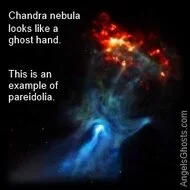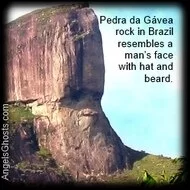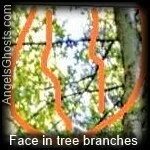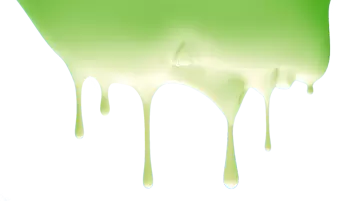Learn about audio and photographic effects you may come across when ghost hunting. These are not ghosts...
Matrixing is a word being used quite a bit by ghost investigators in modern times. So, what is matrixing? And, what do the closely related terms matrixing, pareidolia, apophenia and anthropomorphism mean with relation to paranormal or ghost investigation? We'll uncover patterns in photos and audio that, simply put, are not real evidence of haunting.
Pattern Recognition Behavior
Being social creatures by nature, we human beings tend to attempt to identify with the world outside of us. We subconsciously do this by attempting to find things we recognize, especially human attributes, within the things we see and hear.
One of the first skills we learn as infants is pattern recognition. The recognition of patterns is a fundamental skill needed by animals to spot predators and is, therefore, associated with survival. This natural response to the physical environment and its stimuli is known as pareidolia - a psychological phenomenon through which a random, vague image or sound is perceived as being significant. We are naturally seeking communication.
 Common examples of pareidolia include seeing people or religious symbols in clouds, or maybe hearing hidden messages on audio recordings played in reverse. This is not to say these images and sounds are not there, but one must consider, "What is their significance?" "Is there some significance to this intriguing thing I see or hear?"
Common examples of pareidolia include seeing people or religious symbols in clouds, or maybe hearing hidden messages on audio recordings played in reverse. This is not to say these images and sounds are not there, but one must consider, "What is their significance?" "Is there some significance to this intriguing thing I see or hear?"
Similarly, the term anthropomorphizing is when we attribute human form or personality to things non-human. Seeing a ghost hand in space, as in the photo at right, is an example of this trait. Both anthropomorphism and pareidolia can be defined as being forms of apophenia. Apophenia is the experience of seeing patterns or "connections" in random or meaningless data, or the perception of connections and meaningfulness of unrelated phenomena.
 Matrixing & Ghost Hunters
Matrixing & Ghost Hunters
The term matrixing is used probably the most when it comes to paranormal investigating, and many use this coined-by-ghost-hunters word synonymously with the word pareidolia. In fact, SyFy's Ghost Hunters claim to have created the word to explain pareidolia, describing matrixing as,
"...the human mind's natural tendency to find familiar shapes in complex shapes or colors. In other words, finding a face in the shapes and shadows of a collection of objects."
However, Tony Kay Anderson of Paranormal Sight sees a distinct difference between the two terms:
"I have thought about how some people enlarge a picture so much that it distorts the image to a point that all the picture contains is matrixing. One cannot give an opinion on something that contains matrixing. I thought I would give my interpretation of the meanings of pareidolia and matrixing for those who do not know what they mean.
To try and determine the authenticity of evidence collected while ghost investigating, re-examine photographic, video and audio files by revisiting locations to try and determine if something non-paranormal appeared paranormal, or see if you can make sense of strange sounds previously recorded that may have a logical explanation. Perhaps the furnace kicking on makes an other-worldly noise that resembles a human scream, or a tree branch viewed at the perfect angle appears to look like a hand.
Ghosts in photographs should, more often than not, be made up of their own material and color, and not the combination of various shapes and colors from background objects. However, this can be difficult to judge at times, as objects that are transparent, such as an apparition, will have the background colors visible within it, as well.
Most cases of matrixing are caused by enlarging a picture until you see objects that look familiar. It is our mind’s natural tendency to see things we know. In pictures I have seen with matrixing, as of lately, they have contained faces that do not look like a human but more look like cartoon figures, at best. These are not paranormal images as a few people seem to believe. It is their imagination at work. When enlarged, pictures of forests, fields, mirrors, glass, and even a closet filled with items may seem like they have paranormal activity happening. In these types of pictures, we will perceive them to contain faces, skulls, demons, and other things that are not really there. In a forest, there may be a collection of different things such as shadows, sun, tree limbs, leaves or even a bird in a tree that mesh together and create an image. Do not let anyone tell you that a picture contains paranormal activity when the picture has been so distorted by enlarging (or the quality has decreased due to reduction in file size).
When I look at a picture, I feel there is a difference between pareidolia and matrixing, although others do not. Pareidolia for me is not the changing of a picture but is what we see when we look at the lunar surface and see the man in the moon. Pareidolia is clouds that take on shapes which we know, such as, animals, faces, and other things that are familiar. Pareidolia may be found in an untouched picture you take, and if you see an object that you think may be paranormal, you should go back to where you took the picture, and make your own judgment. I looked at a picture once from Gettysburg where you would swear there was an apparition of a man; but the man who took the picture explained that it was only a part of a large rock and a tree stump. The picture was untouched, not enlarged, but it sure looked like a man just standing alone. That is an example of pareidolia."
 More on Matrixing & Ghost Hunting
More on Matrixing & Ghost Hunting
When considering matrixing, we should note how the effects of apophenia, (as well as anthropomorphism and pareidolia) can become magnified when one is stressed, fearful, under poor lighting or unfamiliar surroundings, as well as increased use of peripheral vision. As paranormal investigators, we cannot stop our natural tendency to recognize patterns from happening; but we can certainly be aware of it and look to expect it. By closely examining what we believe we see and hear, we can then, attempt to possibly get closer to the truth.
(Photo: Many times, people see faces of people in nature after taking photographs. Do you see a face in the branches?)
Tony mentioned that enlarging photos, or looking at photos with decreased file size produces more pixellation which causes our minds to shift stronger into pattern recognition mode.
 To try and determine the authenticity of evidence collected while ghost investigating, re-examine photographic, video and audio files by revisiting locations to try and determine if something non-paranormal appeared paranormal, or see if you can make sense of strange sounds previously recorded that may have a logical explanation. Perhaps the furnace kicking on makes an other-worldly noise that resembles a human scream, or a tree branch viewed at the perfect angle appears to look like a hand.
To try and determine the authenticity of evidence collected while ghost investigating, re-examine photographic, video and audio files by revisiting locations to try and determine if something non-paranormal appeared paranormal, or see if you can make sense of strange sounds previously recorded that may have a logical explanation. Perhaps the furnace kicking on makes an other-worldly noise that resembles a human scream, or a tree branch viewed at the perfect angle appears to look like a hand.
(Image of a Ghost Deer: A mist outdoors has an animal shape. Is it a ghost or an example of pattern recognition?)
Ghosts in photographs should, more often than not, be made up of their own material and color, and not the combination of various shapes and colors from background objects. However, this can be difficult to judge at times, as objects that are transparent, such as an apparition, will have the background colors visible within it, as well.
Take time to understand how you perceive things, and how the world around us can appear differently to different people. By doing so, you will sharpen your own paranormal investigation skills.
More Reading...
Anthropomorphizing
Fake Ghost Pictures

